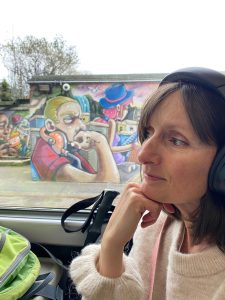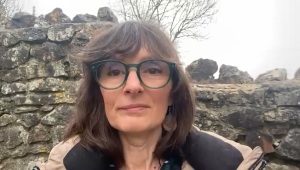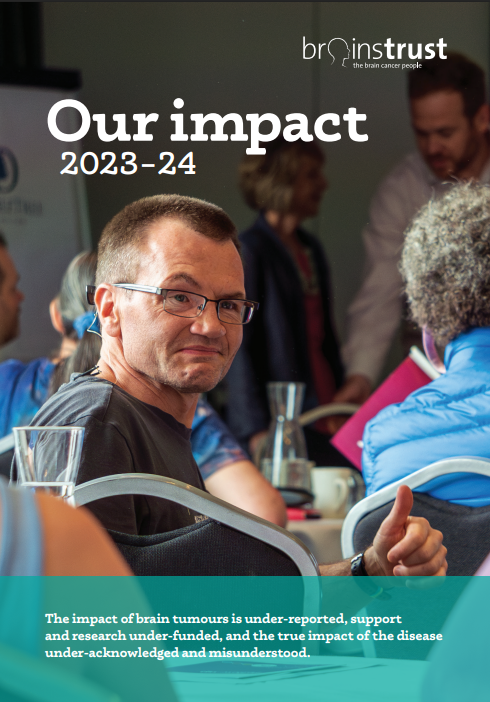
brainstrust has been a lifeline to me these past 15 months. My story began in the spring of 2023: I was suffering from a very sore tongue, everything tasted strange and my hearing was bad on the left side. I decided it was part of the ageing process.
Then in the summer I started becoming clumsy and a bit dizzy, tripping over every now and then. In September I had terrible eye pain but my optometrist couldn’t see anything wrong. Then in October I collapsed and fell in the street. It felt like someone had hit me really hard in the back. Passers-by came to my rescue and I sat for a while with my legs shaking uncontrollably.
I phoned my GP surgery and later that day received a message that the doctor would like to see me in the morning. At the time I was halfway through a masters degree in Education at the University of Exeter, I was living on my own and self-employed. I suddenly felt incredibly vulnerable
My doctor was great-I was lucky he was there, as he was a retired partner locuming that day. Within two weeks I was sent to an ear, nose and throat specialist, had a hearing test and an MRI. One evening towards the end of November, I got a phone call from a consultant who informed me that he was very sorry but the MRI showed I had a brain tumour known as a vestibular schwannoma (VS). It was very large, and he was referring me to the clever skull base specialists in Bristol. He said I might like to do some of my own research, but not to ‘Dr Google’ it. He would send some information.
Speechless and stunned, I had to tell my mum (who I was now living with, as a boomerang 54-year-old).
I found brainstrust and ordered a Brainbox – which is a priceless information pack – and became part of this unique, precious brain tumour community. My 28-year-old son Kez and 25-year-old daughter Jessie were included right from the start and helped me immensely. My younger sister Emily became my main carer, while my closest friends took it in turns to visit and look after me.
Surgery was the only option for me as the tumour was pressing on bits it shouldn’t, and hydrocephalus was present. By now I couldn’t sleep lying down, I was sleeping in a sitting position because my head felt like a wobbly water balloon. I had a lot of pressure pains in my head too. I met my neurosurgeon on the 19th January 2024 and surgery was booked for the 29th. I had 10 days to prepare: not enough time to worry, just to sort things out and be with those I love. I attended a brainstrust breathwork session at this time, and requested the soundtrack, which soothed me and helped with night-time anxiety, and later on in hospital.

My surgery was incredibly long, 15 hours. I had an EVD (external ventricular drain) to drain litres of fluid from my brain over the next two weeks. I spent two days in ICU, then 18 days on a high-observation ward. I collapsed and fainted several times after the operation but it was more scary for my loved ones than me. I felt very safe at Southmead Hospital; I am forever grateful to my neurosurgeon Mario Teo and his team, and all the nursing staff who looked after me so well.

As soon as I could, I started joining brainstrust online meetings. Their complementary therapies such as hypnotherapy with the amazing Louise, and Art Time with Maddy and Carol (see one of my paintings – left) , with all the incredible brain tumour patients also attending, have helped me rebuild my life. I have also attended a writing workshop and a focus group for VS patients.
Being a self-employed student, I was in a financial situation I didn’t expect and I am incredibly thankful to brainstrust’s Eric who helped me sort this out. My amazing coach Ellie is now helping me get back into life and find ways to deal with new everyday experiences and I have my brave, inspirational peer mentor Nikki to thank, whose chats I always look forward to. I am now on my neuro-rehabilitation journey and looking forward to the future. I will have my next MRI in August 2025 to see if the residual tumour is stable, but mentally I am feeling much better. brainstrust has been a major part of this and I have now become a brainstrust Peer Supporter to talk to and help others who may be in a situation similar to my own.









